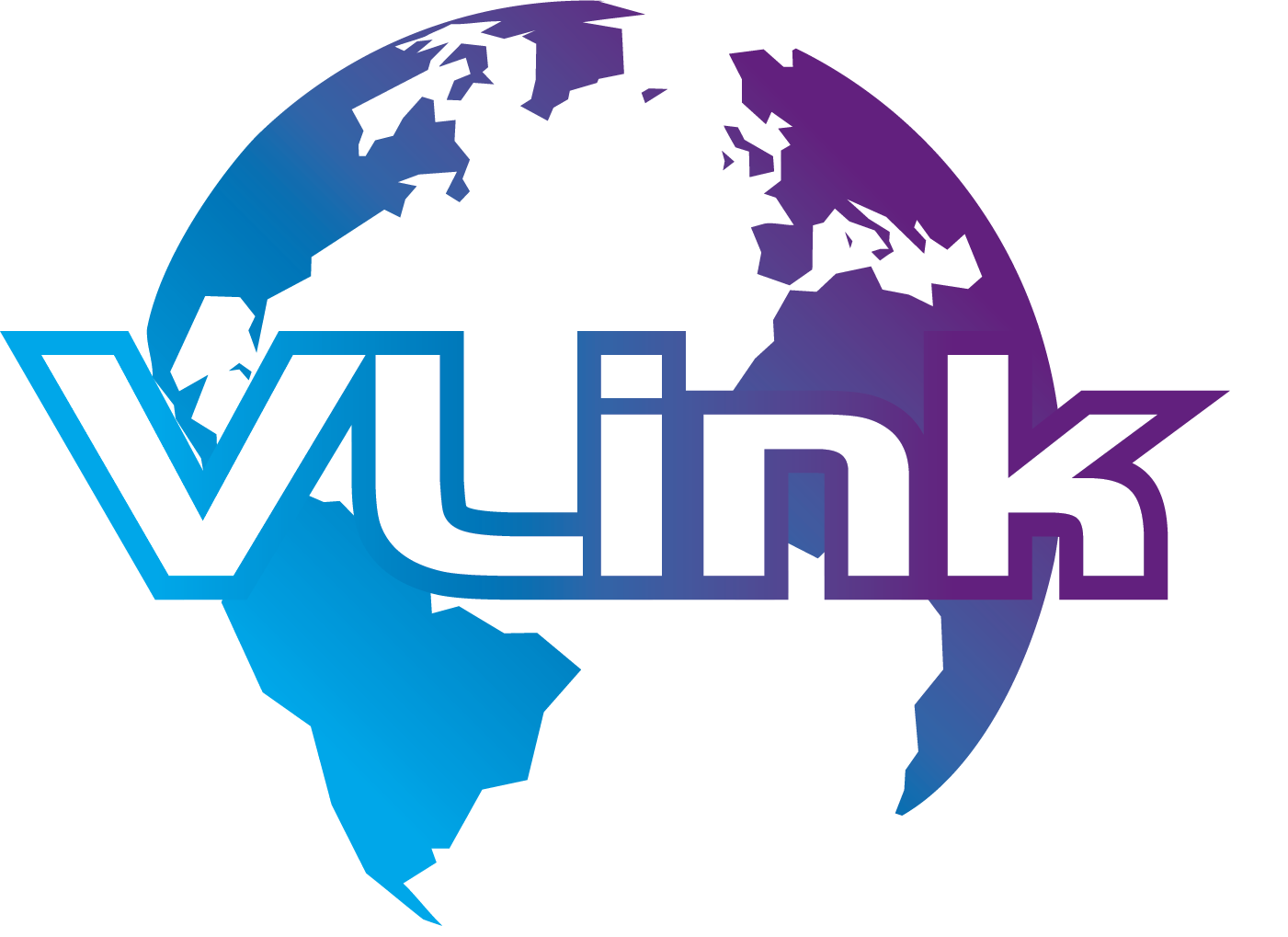In today's hyper-competitive landscape, standing still is the fastest way to fall behind. Digital transformation in organizations has evolved from a niche IT project into a core, board-level strategic imperative. It's the engine of modern resilience, growth, and innovation.
The statistics paint a stark picture: according to McKinsey, over 70% of companies worldwide accelerated their digital transformation efforts in response to the global disruptions of recent years, aiming to meet radically new customer expectations and streamline operations.

However, many organizations still struggle with the everyday challenges of digital transformation, including navigating legacy systems and managing profound organizational change.
This blog provides a definitive roadmap, exploring how a deliberate strategy to enterprise digital transformation can unlock unprecedented value, maximize return on investment, and build a sustainable competitive advantage for the future.
What is Digital Transformation in Business?
At its core, digital transformation in business is the fundamental reimagining of how an organization operates and delivers value to its customers by integrating digital technology into every facet of its operations. It's a profound cultural, operational, and technological shift.
This is not merely digitization—the conversion of analog information into a digital format (such as scanning a paper document). Nor is it just digitalization, using digital data to make existing work processes more efficient (such as using a PDF instead of a paper form).
True transformation leverages technology to create entirely new business models, unlock novel revenue streams, and cultivate a culture of continuous innovation. Whether for a burgeoning retail startup in Toronto or a Fortune 500 manufacturing giant in Texas, digital transformation in business demands a holistic rethinking of how products and services are conceived, created, delivered, and supported.
Key business areas profoundly impacted include:
- Customer Experience (CX): Moving beyond basic service to deliver hyper-personalized digital interactions, seamless omnichannel support, and predictive customer care powered by AI.
- Operations & Processes: Automating complex workflows, leveraging intelligent automation and analytics for supply chain optimization, and migrating core functions to scalable, secure cloud platforms. This is the heart of improving digital transformation in organizational processes.
- Workforce Enablement: Fostering a digital-first culture through continuous upskilling, implementing advanced remote collaboration tools, and deploying self-service HR and IT platforms that empower employees.
- Product & Service Innovation: Creating "smart" products with embedded IoT sensors, developing data-as-a-service (DaaS) business models, and using digital platforms to launch new services at unprecedented speed.
- Data-Driven Decision-Making: Breaking down data silos to create a single source of truth, employing predictive analytics to forecast trends, and equipping leadership with real-time dashboards for agile decision-making.
The benefits of digital transformation in organizations are not theoretical; they are tangible, measurable, and span every industry, driving significant cost reduction, massive efficiency gains, fierce customer loyalty, and the agility needed to navigate market volatility.
Why Digital Transformation in Organizations is a Game-Changer
For market-leading organizations, embracing digital transformation in organizational processes is no longer a competitive advantage; it's the very foundation of their market leadership. The conversation has shifted from "if" to "how," with a laser focus on the tangible returns.
The ROI of digital transformation in organizations is being realized through concrete, measurable performance improvements across the board.

- Radical Efficiency Gains: Automation, powered by Robotic Process Automation (RPA) and AI-driven analytics, eliminates repetitive manual tasks, accelerates workflows, minimizes human error, and frees up skilled employees to focus on high-value strategic work.
- Unmatched Agility and Resilience: Cloud-native platforms and agile development methodologies empower organizations to pivot in near real-time. Whether responding to supply chain disruptions, sudden shifts in consumer behavior, or a new competitive threat, digital-native businesses are built to adapt.
- Profound Customer-Centricity: By harnessing data, businesses can move from a reactive to a predictive understanding of their customers. This enables hyper-personalized marketing, proactive service, and frictionless fulfillment, cornerstones of loyalty and long-term growth.
- Explosive Revenue Growth: Digital channels open up global markets, while new digital products and data-monetization strategies unlock entirely fresh streams of income, transforming cost centers into profit centers.
A landmark survey underscores this impact: over 56% of CEOs reported that their investments in digital transformation resulted in direct revenue growth. In comparison, automation and process optimization delivered an average of 10–20% in operating cost savings.
Industry Example in Action:
A major North American logistics company was plagued by inefficient routing and high fuel costs. By implementing an IoT and AI integration platform, they integrated real-time traffic data, weather patterns, and vehicle diagnostics. The result? A 15% reduction in fuel consumption, a 25% improvement in on-time delivery rates, and a significant boost in driver satisfaction and retention. This is a prime example of how digital tools directly improve the bottom line.
The Blueprint: A Key Strategy to Digital Transformation Success
An effective strategy to digital transformation is not a generic template; it is a bespoke, disciplined, and iterative roadmap meticulously designed to maximize business value, navigate organizational change, and deliver quantifiable results. It is the crucial bridge between technological potential and business reality.
A step-by-step strategy to the digital transformation journey for IT leaders are as follows:-

1. Define the "Why": The North Star Vision
Before a single line of code is written or a new platform is purchased, leadership must answer the most critical question: "Why are we doing this?" A successful transformation is anchored in clear business goals. Are you aiming to increase market share by 20%? Reduce customer churn by 15%? Launch a new product category in 12 months? Your vision must be specific, measurable, and directly aligned with your organization's core mission and unique identity. This prevents the "technology for technology's sake" trap and ensures every initiative serves a strategic purpose.
2. Align Stakeholders and Cultivate Digital Leadership
Digital transformation is a team sport. It requires unwavering buy-in from the C-suite down to the front-line employees who will use the new tools and processes. This involves creating a cross-functional steering committee, appointing "digital champions" within each department, and establishing transparent, consistent communication channels. Executive sponsorship is non-negotiable, as leaders must model the desired behaviors and visibly champion the change.
3. Conduct a Brutally Honest Technology Stack Assessment
You can't build a future-ready house on a crumbling foundation. This step involves a comprehensive inventory of your current IT landscape. Identify legacy systems that create bottlenecks ("technical debt"), pinpoint security vulnerabilities, and map out data silos. The goal is to prioritize investments in scalable, secure, and future-ready platforms, often involving a strategic move to the cloud (IaaS, PaaS, SaaS), adopting a microservices architecture for flexibility, and developing a robust API strategy for seamless integration.
4. Redesign Processes for a Digital-First World
Simply digitizing a broken, inefficient process yields a faster, yet still flawed, process. This is the stage at which the digital transformation in organizational processes truly takes place. Using techniques like process mining and value stream mapping, you must meticulously analyze current workflows, identify friction points and redundancies, and re-engineer them for digital optimization. This involves automating manual approvals, integrating disconnected systems, and redesigning workflows to focus on the user, whether a customer or an employee.
5. Upskill and Empower Your Workforce
Your people are your greatest asset in any transformation. A significant skills gap can derail even the best-laid plans. A proactive strategy to digital transformation includes robust investment in training, reskilling, and upskilling programs. Focus on building critical in-house expertise in areas like data literacy, agile methodologies, cybersecurity, and cloud computing. This not only ensures the long-term success of your digital transformation initiatives but also fosters a culture of continuous learning, boosting employee morale and retention.
6. Implement, Test, Learn, and Iterate
The days of the multi-year, "big bang" implementation are over. Modern digital transformation thrives on agile principles. Start with pilot programs and Minimum Viable Products (MVPs) to test new solutions in a controlled environment. Gather feedback relentlessly from end-users, measure performance against initial benchmarks, and use those insights to iterate and improve. This iterative cycle builds, measures, learn, minimizes risk, accelerates time-to-value, and ensures the final solution is precisely what the business needs.
7. Track Relentlessly and Optimize for ROI
What gets measured gets managed. From the outset, define the Key Performance Indicators (KPIs) that align with your North Star vision. These should be a mix of financial metrics (cost savings, revenue lift) and operational metrics (process cycle time, customer satisfaction scores). Use analytics dashboards to track progress in real-time and be prepared to adjust your strategy based on the data you collect. This continuous optimization is essential for maximizing the ROI of digital transformation in organizations.
Common Challenges of Digital Transformation in Organizations
The journey of transformation is rarely a straight line. Proactively identifying and planning for obstacles is a hallmark of a mature strategy. So, what are the biggest challenges of digital transformation in organizations?
- Deep-Rooted Cultural Resistance: This is often the most significant barrier to change. Employees, including middle managers, may resist changes that disrupt established routines, threaten their perceived expertise, or stoke fears of job displacement. Overcoming this requires a sophisticated change management plan built on empathy, transparency, and clear communication about "what's in it for me."
- The Anchor of Legacy Systems: Decades-old, monolithic IT systems can be complicated and expensive to modernize or integrate with new, agile technologies. This "technical debt" hinders innovation, restricts data sharing, and renders the organization less responsive to market changes.
- The Widening Skills Gap: There is intense competition for digitally skilled talent in the US and Canada. A shortage of in-house expertise in areas such as data science, AI, cloud architecture, and cybersecurity can significantly slow down the adoption and implementation process.
- Budgetary Constraints and ROI Ambiguity: Digital transformations often require significant upfront investment. It can be challenging for leaders to secure budget approvals from stakeholders who demand a transparent, predictable, and near-term return on investment, especially when many benefits (like improved brand perception or employee morale) are harder to quantify.
- Siloed Data and Disconnected Processes: For many organizations, critical data is trapped within departmental silos (CRM, ERP, marketing automation tools). This fragmentation prevents a holistic view of the customer and the business, severely limiting the potential of analytics and AI and crippling any attempt at meaningful digital transformation in organizations processes.
Despite these hurdles, a robust strategy for digital transformation, coupled with visible leadership and relentless communication, empowers organizations to navigate these challenges and build a resilient, digital-first culture.
Strategies for Integrating with and Modernizing Legacy Systems
Integrating state-of-the-art technology with deeply entrenched legacy systems is often the toughest technical challenge organizations face. Here’s how to tackle it:
- Phased Migration Strategy: Rather than immediately “rip and replace,” use a phased approach to modernization. Begin by identifying mission-critical legacy systems and creating a roadmap that gradually transitions workloads to cloud or modular architectures, minimizing business disruption.
- API-Led Connectivity: Leverage robust Application Programming Interfaces (APIs) to connect old and new systems, thus extending the value of legacy assets while gradually introducing advanced capabilities.
- Dual Maintenance and “Strangler Fig” Patterns: Modernize incrementally by building new features and applications around legacy cores, gradually allowing older systems to “retire” as modern equivalents take over.
- Cost-Benefit Analysis & Total Cost of Ownership (TCO): Evaluate the long-term value of new technologies by factoring in not just upfront costs, but ongoing maintenance, cybersecurity requirements, scalability, and innovation potential. Use clear metrics to compare the ROI of maintaining versus replacing legacy technologies.
Finally, future-proof your investments by favoring flexible, modular architectures (like microservices) and cloud-native solutions. This enables your business to adopt innovations quickly, integrate with partners, and reposition in response to market changes—without being constrained by technical debt.
Digital transformation in organizations is not only a technological upgrade but a fundamental cultural and leadership transformation. Success depends on your ability to nurture innovative mindsets, support leaders who champion change, and architect a seamless bridge between legacy and next-gen solutions. By addressing these often-overlooked dimensions, you position your organization to achieve lasting ROI, sustainable competitive advantage, and a vibrant digital future.
Building a Culture of Innovation and Leadership in Digital Transformation
Fostering a Culture of Innovation
Digital transformation is not solely about adopting new technologies—it’s a cultural journey. For your strategy to succeed, organizations must create an environment where experimentation is valued, risk-taking is encouraged, and failure is seen as a step toward learning and growth. Leaders should champion internal hackathons, innovation labs, and cross-functional teams to keep fresh ideas flowing. Regular “innovation challenges” and forums for employees to pitch solutions can help organizations stay ahead while boosting morale and engagement.
The Role of Leadership in Digital Transformation
While executive sponsorship is essential, the most successful digital transformations feature leaders who cultivate a shared vision, provide psychological safety, and inspire teams to embrace change. The best leaders are not just administrators; they are catalysts:
- Visionaries who clearly articulate “why” digital matters—helping employees connect technology initiatives with business outcomes and customer value.
- Facilitators who remove obstacles, empower teams, and foster collaboration across traditional silos.
- Change agents who proactively address resistance, offering coaching, mentorship, and transparent communication.
- Innovators who shift the IT leadership mindset from “keeping the lights on” to driving continuous business innovation. Instead of focusing solely on operational efficiency and cost reductions, modern IT leaders must become trusted business partners, co-creating new revenue streams, digital products, and enhanced customer experiences.
Driving Sustainable Change Through Empowerment
Transformation that sticks goes beyond the top-down direction. Invest in developing “digital ambassadors” throughout the organization who champion change, lead peer training sessions, and become role models for new ways of working. Recognize and reward those who embody curiosity and agility—building digital resilience into your company's DNA.
Real Examples of Digital Transformation in Organizations
As we all know, theory is valuable, but seeing transformation in action provides clarity and inspiration. Many sectors have witnessed groundbreaking shifts. Here are a few real-world examples of digital transformation in organizations:
| Industry | Example of Digital Transformation |
| Retail | AI-powered personalization engines that recommend products in real-time based on browsing history and purchase behavior. |
| Manufacturing | IoT sensors that monitor the entire supply chain, optimizing logistics, predicting maintenance needs, and reducing downtime. |
| Healthcare | Telemedicine platforms and unified digital patient records that streamline consultations, diagnostics, and ongoing care management. |
| Finance | Robotic Process Automation (RPA) automates routine and high-volume tasks, such as compliance checks, fraud detection, and customer onboarding. |
These stories showcase how digital transformation in business creates tangible value on the front lines:
- Retail Dominance: A leading global pizza chain revolutionized the customer experience by building a seamless digital ordering platform accessible via any device. They integrated real-time order tracking, AI-powered promotions, and loyalty programs, resulting in over 75% of their sales originating from digital channels and cementing their market leadership.
- Manufacturing Excellence: A multinational industrial goods manufacturer embedded IoT sensors in its products and factory equipment. This created a "digital twin" of their operations, allowing them to predict equipment failures before they occurred, optimize inventory with pinpoint accuracy, and reduce delivery delays, thereby directly improving margins and customer satisfaction.
- Healthcare Accessibility: Digital transformation is driving a revolution in healthcare. A major Canadian hospital network deployed an integrated telehealth platform and centralized Electronic Health Records (EHR). This allowed patients in remote communities to access specialist care, reduced administrative overhead for clinicians, and provided a single, accurate source of patient information, dramatically improving the quality and efficiency of care.
- Financial Services Efficiency: A large US bank deployed an army of software bots to handle thousands of daily compliance checks, account setup verifications, and fraud alerts. This RPA initiative slashed operational costs by 30%, reduced processing times from days to minutes, and improved accuracy to nearly 100%.
Each of these examples illustrates how digital transformation in organizations processes builds resilience, unlocks data-driven growth, and places customer needs at the absolute center of the business model.
Measuring the ROI of Digital Transformation in Organizations
Justifying and sustaining momentum requires a clear-eyed approach to measurement. Measuring the ROI of digital transformation in organizations is a blend of quantitative science and qualitative art. It's about tracking both the complex numbers and the strategic value created.
Core ROI Metrics to Track
- Cost Reduction: The most direct return on investment. Measure savings from automating manual processes, reducing infrastructure costs through cloud migration, and lowering operational expenses.
- Productivity Gains: Quantify improvements in employee output, such as a reduction in time spent per task, an increase in cases handled per agent, or faster product development cycles.
- Revenue Growth: Attribute new revenue directly to digital initiatives. This includes sales from new e-commerce channels, revenue from new digital products or services, and increased customer lifetime value (CLV) from improved CX.
- Customer Satisfaction & Retention: Track key experience metrics, such as Net Promoter Score (NPS), Customer Satisfaction (CSAT), and churn rate. Enhanced digital experiences almost always lead to higher loyalty and retention.
- Time to Market: Measure how quickly your organization can now bring new ideas, products, or features to market. Agile digital processes dramatically shorten this cycle, providing a significant competitive edge.
Essential KPIs
- Revenue attributable to digital initiatives ($): Isolate sales that would not have occurred without the new digital channel or feature.
- Process automation rate (%): Track the percentage of a target process that is now fully automated.
- Customer Acquisition Cost (CAC) reduction (%): Measure how digital marketing and streamlined onboarding reduce the cost of acquiring a new customer.
- Net Promoter Score (NPS) improvements (points): A key indicator of customer loyalty and brand advocacy.
- Time saved per process (hours/days): A direct measure of efficiency gains that can be translated into cost savings.
A leading financial institution, for example, saw a 40% reduction in customer support tickets after launching an AI-enabled chatbot and a comprehensive knowledge base. This clear and compelling ROI win justified the initial investment. Effective ROI tracking must be continuous, with benchmarks established before deployment and reviewed quarterly to adjust the strategy and demonstrate ongoing value.
The Next Frontier: Future Trends & What’s Next for Organizations
The pace of change is only accelerating. Even more powerful and disruptive technologies will define the next wave of digital transformation in business:
- Generative AI & Hyperautomation: Beyond simple automation, technologies like Generative AI are poised to become creative partners, generating code, marketing copy, product designs, and personalized customer interactions, fundamentally transforming how knowledge work gets done.
- Edge Computing: As IoT devices proliferate, processing data at the "edge" of the network (closer to the source) will be critical. This enables the low-latency, real-time processing required for autonomous vehicles, smart factories, and augmented reality applications.
- Industrial Digital Twins: The concept of creating a detailed digital replica of a physical asset or system will expand beyond manufacturing into urban planning, healthcare (such as a digital twin of a patient), and supply chains, allowing for complex simulation and optimization in a risk-free virtual environment.
- Predictive Analytics as a Standard: Data-driven forecasting will become a table-stakes requirement. Businesses will utilize predictive analytics for a range of applications, including anticipating customer churn, identifying sales opportunities, managing inventory levels, and mitigating supply chain risks.
- Blockchain and Decentralized Solutions: Blockchain technologies are being increasingly adopted beyond cryptocurrency. Organizations are utilizing decentralized ledgers for transparent and secure transactions, smart contracts, and supply chain traceability. This adoption can help reduce fraud, enhance compliance, and build trust with both customers and partners.
- Sustainability and Green IT: As regulatory pressure and consumer expectations rise, sustainable digital transformation in business will become paramount. Innovations in cloud efficiency, renewable energy-powered data centers, and circular IT asset management will enable organizations to meet their environmental goals while unlocking operational cost savings.
A future-ready strategy to digital transformation trends requires a culture of perpetual motion, one that embraces continuous learning, invests strategically in employee upskilling, and is not afraid to experiment with cutting-edge tools and techniques.
Choose VLink Expertise to Embrace Digital Transformation
The path to a fully realized digital transformation in organizations is both exciting and daunting. As this blog illustrates, a successful journey requires a harmonious blend of clear vision, robust technology, re-engineered processes, and an empowered workforce. Navigating these interconnected domains while running your daily operations is a monumental task.
This is where a strategic partner becomes your most valuable asset.
At VLink, we don't just provide technology; we deliver transformation. Choose our dedicated team as your strategic partner and implementation accelerator, translating your business objectives into tangible, technology-driven outcomes. Our expertise is your advantage:
- Bespoke Strategy and Roadmap Development
- End-to-End Technology Modernization
- Mastering People and Process Change
- A Partnership for Growth
Don't navigate this critical journey alone. Partner and hire skilled developers who can ensure your digital transformation is not just a project, but a profound and lasting competitive advantage.
Conclusion: Your Digital Future Starts Now
Embracing digital transformation in organizations is no longer a strategic option—it is the primary lever for survival, growth, and relevance in the 21st century. Businesses that invest intentionally in digital transformation can expect not only a higher ROI but also more agile, intelligent, and resilient operations capable of thriving amidst uncertainty.
A clear vision, unwavering leadership commitment, and a structured, iterative strategy are the key elements that separate leaders from laggards. The journey is complex, but the rewards are transformative.
Ready to future-proof your organization and unlock your full digital potential?
Contact our experts today for a complimentary, no-obligation digital transformation consultation.










 Shivisha Patel
Shivisha Patel

















